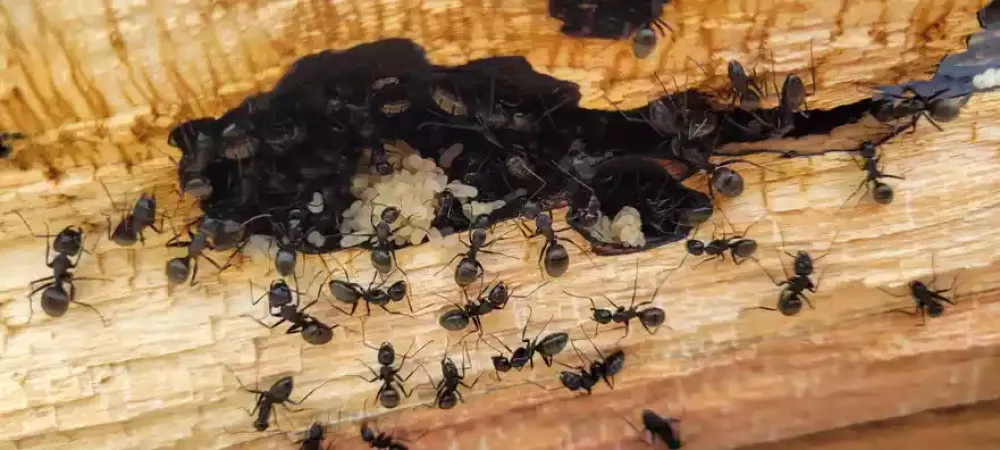Signs You Have a Carpenter Ant Problem

If you are a homeowner and want to get the most from your house for years to come, taking steps to protect your property is essential. You can face a range of threats when you least expect it, but pests are some of the most common, inflicting a lot of damage. Carpenter ants will get into your home and cause harm if they get the chance, and you probably won’t spot them in the early stages unless you know the signs for which to look. Learning about carpenter ants is a step in the right direction if you would like to reduce your odds of an infestation, but it’s also vital you know when to contact a professional before the issue gets out of control.
Red Flags
So, what are the red flags that indicate a possible infestation? The first sign is large black ants crawling on the floor or wall; although they can vary in size, large black ants are usually carpenter ants and are easily identifiable. Most people are quick to kill on sight because they think doing so will solve the problem. Smashing a carpenter ant as soon as you see it is not always wise, instead watch it for a few minutes and try to follow it back to its nest to learn where the colony is hiding – this is the best chance for finding the ant colony. Carpenter ants forage primarily at night so finding the colony can be tricky. They also have satellite colonies in addition to the primary colony, which confuses the matter even further. Not to worry, if you don’t see ants you may very well hear them. Often when carpenter ants are in the wall voids, you can actually hear them chewing wood. If you don’t hear them, you may see evidence of an infestation. After a colony is well established you might see piles of saw dust, which is wood shavings caused by the carpenter ants chewing the wood to create harborage for the colony – as opposed to termites which use the wood as a source of nutrition. Carpenter ants don’t consume the wood – they mine it.
Protecting Yourself
At this point, you are probably wondering what to do to keep the pests away from your home and off your property. Knowing a few tips will reduce the risk and give you peace of mind. Rotting wood attracts carpenter ants and should be removed from your property. Stacked firewood near the home can also be a problem; try moving it to the outside perimeter of your property. Removing stumps from your yard and cutting down dead trees is also a smart move. Really – any damaged wood material on your property close to the home needs to be inspected and monitored for ant activity. If discovered the best bet may be to call a professional.
Getting Professional Help
No matter what you try, it can be tough to get the same results as you would with a highly trained, certified pest control technician. A qualified licensed technician will come to your door and offer the best possible protection, you won’t be disappointed when you see them in action. Turn to Dial Environmental when you want to teach carpenter ants a lesson they won’t soon forget.
Once you enlist our help, we will come to your home, do a thorough inspection and use an approach that makes sense for you. As a recipient of “Best of Essex” for twelve (12) years in a row, the results we offer will put a smile on your face because we will do what it takes to get the job done right. Pick up your phone if you are ready to begin, and you will know that you are in good hands.
Learning More
Find out more about our Ant Control services here.
Have you not seen actual ants, but only droppings? Learn more about how to differentiate what left them here: Ant Vs. Termite Droppings
